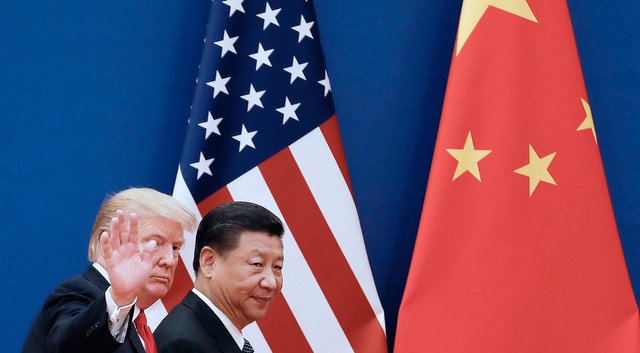CHINA WILL RETALIATE IF TRUMP SLAPS 25% TAX ON $200BN CHINESE IMPORTS

This development is seen as an escalation of the trade war between the U.S. and China, which was triggered by the tariffs imposed by President Donald Trump’s on a $34 billion worth of Chinese goods that took effect last month. Not to be outdone, China made a tariff of their own on $34billion of US goods also.
For better understanding, especially of our valued readers, TERRA INTERNARTIONAL REALTY opted to give the meaning of tariff in the simplest way possible.
A tariff, in plain terms, is a tax on goods coming into a country.
In the US, many tariffs are paid at the time of entry into the US via a customs broker or agent — along with other duties and fees that may apply to the import.
The idea of a tariff is to push up the price of foreign goods to make locally manufactured more attractive and sellable.
In this case, Trump is trying to make little use of Chinese-produced goods and opt for items made in the US or imported from a more friendly trade ally The Bank of America Merrill Lynch strategist, said the new taxes will shift the supply and demand for the various goods they are imposed on.
WHAT DOES IT MEAN FOR THE AVERAGE AMERICAN?
Businesses that see the cost of goods rise have three options to make up the losses: cuts costs in other areas, simply absorb the cost and accept lower profit margins, or pass the costs onto consumers.
The latter option is concerning to economists because it could lead to a slowdown in consumer spending and an uptick in inflation.
Higher prices would reduce the return to labor and capital that would encourage Americans to work and invest less, leading to lower output.
In all, economists expect the current round of tariffs on China to result in a modest drag on US economic growth. Gregory Daco, head of US economic at Oxford Economics, estimated that Friday’s tariffs will result in a 0.1% to 0.2% direct drag on US GDP growth.
If businesses are worried about the long-term effects, they may delay investments and hiring plans. This creates a second-level drag on the US economy and could result in a more dramatic slowdown.
SEE ALSO: IT’S A TRADE WAR: Europe, Mexico, and Canada retaliate against Trump’s steel and aluminum tariffs
China said that “blackmail” wouldn’t work and that it would hit back if the United States takes further steps hindering trade, as the Trump administration considers slapping a 25 percent tariff on $200 billion worth of Chinese goods. The proposal would increase the potential tariff rate from 10 percent the administration had initially put forward on July 10 for that wave of duties in a bid to pressure Beijing into making trade concessions, a source familiar with the plan said on Tuesday.
The tariffs target thousands of Chinese imports, including food products, chemicals, steel and aluminum and consumer goods ranging from dog food, furniture and carpets to car tires, bicycles, and baseball gloves and beauty products.
While the duties would not be imposed until after a period of public comment, raising the proposed level to 25 percent would escalate the already bitter trade dispute between the world’s two biggest economies.
China, which has accused the United States of bullying, again vowed to retaliate if Trump proceeds with the measures, warning that pressure tactics would fail.
Investors fear an escalating trade war between Washington and Beijing could hit global growth, and prominent U.S. business groups, while weary of what they see as China’s mercantilist trade practices, have condemned Trump’s aggressive tariffs.
Washington is preparing to also impose tariffs on an extra $16 billion of goods in coming weeks, and Trump has warned he may ultimately put them on over half a trillion dollars of goods – roughly the total amount of U.S. imports from China last year.
The $200 billion list of goods targeted for tariffs — which also include Chinese tilapia fish, printed circuit boards and lighting products — would have a bigger impact on consumers than previous rounds of tariffs.
Trump had said he would implement the $200 billion round as punishment for China’s retaliation against the initial tariffs aimed at forcing change in China’s joint venture, technology transfer and other trade-related policies.
He also has threatened a further round of tariffs on $300 billion of Chinese goods.
The U.S. Trade Representative’s office initially had set a deadline for final public comments on the proposed 10 percent tariffs to be filed by Aug. 30, with public hearings scheduled for Aug. 20-23.